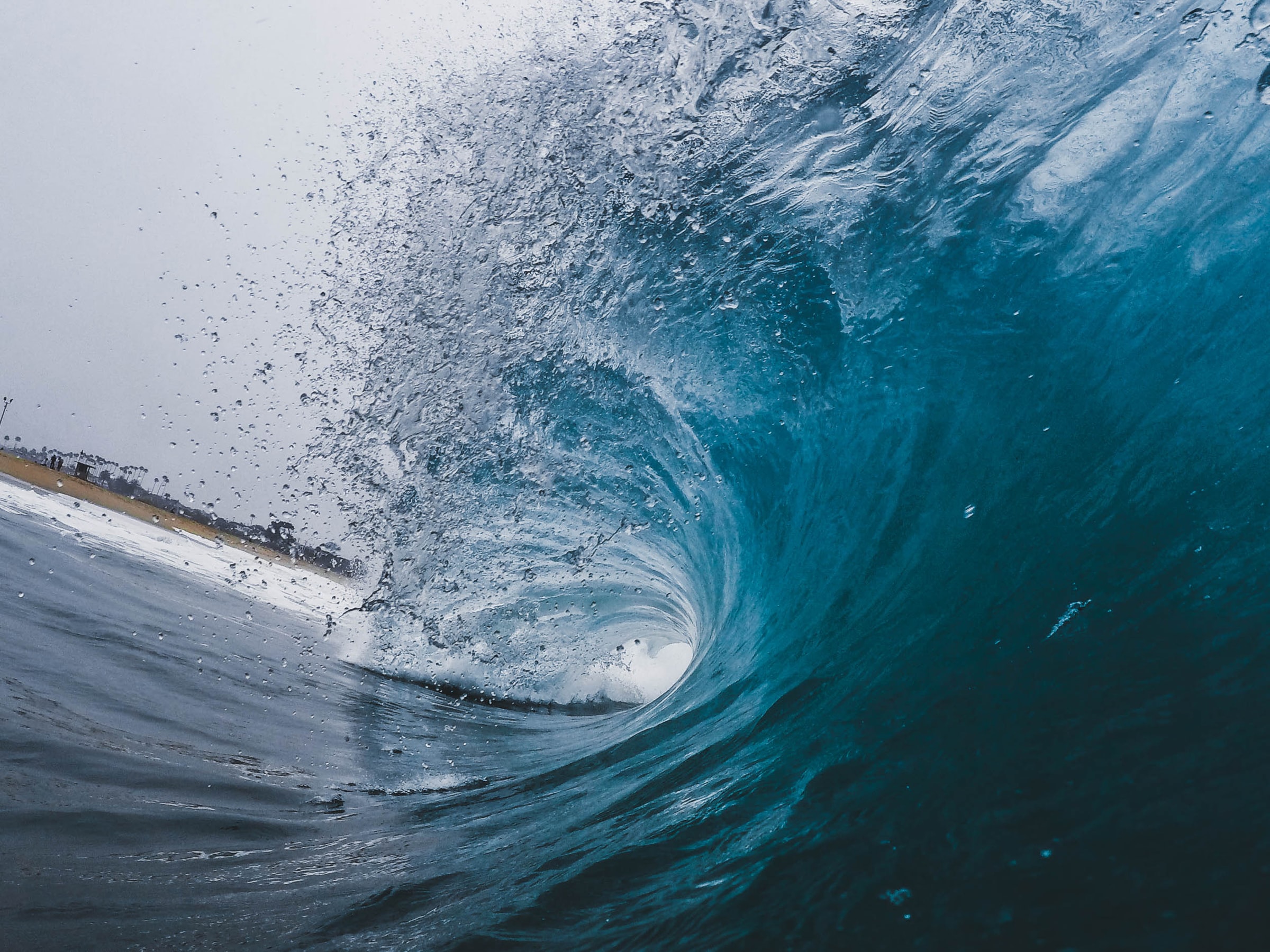Anyone who has ever wiped out on a surfboard or been bounced into shore by a crashing wave knows that the ocean creates a whole lot of power. Harnessing that power could hold one of the keys to producing massive amounts of clean energy – something the United States government is exploring.
In January, the U.S. Department of Energy (DOE) announced $25 million in funding for eight projects that focus on wave energy technologies. The money will research and develop technologies that harness wave power to create electricity.
The funded projects will involve open-water testing at the PacWave South test site off the Oregon coast. PacWave runs two test facilities in partnership with the DOE, the State of Oregon, Oregon State University (OSU), and local stakeholders. The selected projects are part of the DOE’s Water Power Technologies Office (WPTO).

“Harnessing the unrelenting power of the ocean is a clean, innovative and sustainable way to curtail carbon pollution — benefitting American businesses and families, especially coastal communities hit hardest by the impacts of climate change,” U.S. Secretary of Energy Jennifer M. Granholm said in a press release. “Diversifying and expanding our clean energy sources will usher in a new era of energy independence that makes the grid more resilient, curbs the climate crisis, and saves Americans money on their energy bills.”
The PacWave partnership was launched in 2016, but the construction of PacWave South didn’t begin until June 2021. CNBC reported that the facility should be operational by next year, with grid-connected testing starting in 2024.
There is a lot at stake in terms of the potential rewards. The movement of waves – created when the wind blows over the surface of ocean water – can produce substantial amounts of natural energy. The U.S. Energy Information Association estimates that the annual energy potential of waves off U.S. coasts is as much as 2.64 trillion kilowatt-hours or the equivalent of about 66% of U.S. electricity generation in 2020. Potential sites for harnessing wave energy include the west coasts of the U.S. and Europe and the coasts of Japan and New Zealand.

Wave energy converters are used to capture that energy and convert it into carbon-free electricity. For now, however, it still represents a tiny portion of the overall renewable energy market. CNBC, citing data from Ocean Energy Europe, reported that only 260 kilowatts of tidal stream capacity were added in Europe in 2020, while just 200 kW of wave energy was installed. That compares to 14.7 gigawatts of wind energy capacity installed in Europe that same year.
Two of the main challenges of harnessing wave power are the unpredictability of the ocean and the prospect of corrosion. Another problem is that it is not easy to get permits for testing, and even if you did get them, available test sites have been scarce. The DOE’s partnership with Oregon State University to build the PacWave South test facility addresses both of those issues.
The eight projects will focus on the following areas, according to the DOE website:
- Testing wave energy converter designs for use in geographically remote areas or on small, local energy grids. Funding here went to CalWave Power Technologies of Oakland, California ($7.5 million); and Columbia Power Technologies of Charlottesville, Virginia ($4,18 million).
- Developing wave energy converter designs that can be connected to or disconnected from the electricity grid. Funding went to Dehlsen Associates of Santa Barbara, California ($1.8 million); and Oscilla Power of Seattle, Washington ($1.8 million)
- Performing research and development at PacWave related to environmental monitoring technologies, instrumentation systems that operators use to control wave energy converters and other technologies. Funding went to Integral Consulting of Seattle ($379,329); Littoral Power Systems of New Bedford, Massachusetts ($3.98 million); Portland State University in Portland, Oregon ($4.5 million); and the University of Washington in Seattle ($1.3 million)
Stakeholders sound confident that the projects could one day pay off.“To meet our climate goals, we must support American innovation,” said U.S. Senator Alex Padilla, who represents California. “This funding for institutions across California to research and advance wave energy technology has the potential to be an important part of our carbon-free future.”





